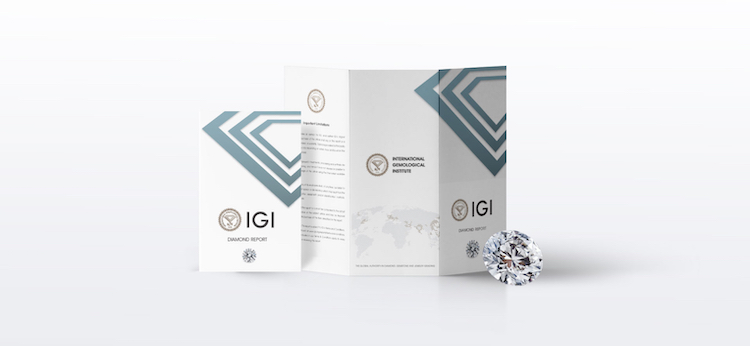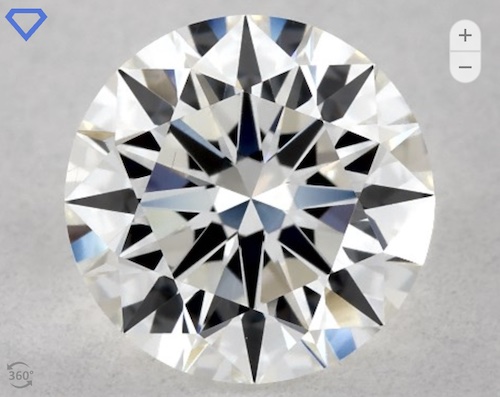©2024 Lab Diamonds Reviews – All Right Reserved.
Education
Lab Diamond Certification

This article has mentions of products from one or more companies, and I may receive compensation if you purchase those products following reading my recommendations.
If you’re interested in purchasing IGI Certified Lab Grown Diamonds read my Brilliant Earth and Whiteflash reviews.
What's In This Guide
ToggleIn the shimmering world of diamonds, lab-grown variants have carved a niche for themselves, offering beauty and brilliance akin to their natural counterparts. However, as with any significant purchase, ensuring the authenticity and quality of these diamonds is paramount. This is where certification comes into play. A certificate not only validates the diamond’s origin but also provides an in-depth analysis of its characteristics, ensuring that you get value for your money. As you embark on the journey to purchase a lab-grown diamond, understanding the nuances of its certification can be your guiding light.
What is Lab Diamond Certification?
A lab diamond certificate is a detailed document provided by an objective third-party laboratory that meticulously describes a diamond’s attributes. This certification process ensures that every facet of the diamond, from its cut to its clarity, is evaluated, measured, and documented. The lab, being an independent entity, has no vested interest in the sale of the diamond, ensuring an unbiased assessment.
Key Elements of a Lab Diamond Certificate:
- Cut, Clarity, and Color: These are the foundational elements that determine a diamond’s quality. The certificate will provide grades for each of these, helping you understand the diamond’s brilliance, imperfections, and hue.
- Carat Weight: This indicates the size of the diamond. While larger diamonds are often more valuable, the quality of the cut, clarity, and color can significantly influence its worth.
- Symmetry and Polish: These factors contribute to how light interacts with the diamond. A well-symmetrical and polished diamond will exhibit better sparkle and fire.
- Grading Scale: Each laboratory may have its grading scale. Familiarizing yourself with the scale used can help you better interpret the diamond’s grades.
- Diamond Plot: This is a visual representation of the diamond’s inclusions and blemishes. It gives you an idea of where these imperfections are located.
Tips on What to Look for on a Certificate:
- Certification Lab: Ideally, opt for diamonds certified by the IGI or GIA. These are two of the most reputable labs in the industry, known for their rigorous and consistent grading standards.
- Consistency in Grading: Ensure that the lab has a reputation for consistent grading. Discrepancies can affect the diamond’s value.
- Detailed Grading: Some labs provide more detailed grading, especially for lab-grown diamonds. This can offer a clearer picture of the diamond’s quality.
Verification: Always verify the certificate’s authenticity by cross-referencing its number on the lab’s official website.
Looking for the finest diamonds? Choose Blue Nile for GIA certified lab diamonds, or explore Brilliant Earth for their exquisite IGI diamonds. For those seeking unparalleled quality, Whiteflash stands out with their IGI Precision Lab Diamonds.
Are Lab-Grown Diamonds Certified?
Absolutely. Lab-grown diamonds undergo a certification process similar to natural diamonds. This certification is essential as it provides a detailed and objective analysis of the diamond’s characteristics, ensuring that buyers are well-informed about their purchase.
When you come across a lab-grown diamond, it should be accompanied by a certificate from a recognized gemological laboratory. This certificate offers insights into various attributes of the diamond, such as its Cut, Clarity, Carat Weight, and Color. It serves as a testament to the diamond’s quality and authenticity.
However, it’s crucial to note that not all certifications are created equal. The reliability and thoroughness of the certification can vary based on the issuing laboratory. As mentioned earlier, when considering lab-grown diamonds, certifications from IGI and GIA are highly recommended due to their rigorous standards and global recognition.
In essence, while lab-grown diamonds are indeed certified, the type of certification they come with can significantly influence their perceived value and authenticity. As a buyer, always ensure that the diamond you’re considering is accompanied by a reputable certificate, ideally from IGI or GIA.
IGI Certification for Lab-Created Diamonds
The International Gemological Institute (IGI) has established itself as a trusted entity in the diamond certification realm, especially when it comes to lab-created diamonds.
 Originating as the industrious backbone of the diamond sector, IGI has grown to become a favored gemological laboratory for many major jewelry chains across North America.
Originating as the industrious backbone of the diamond sector, IGI has grown to become a favored gemological laboratory for many major jewelry chains across North America.
Why IGI Stands Out:
- Detailed Grading: IGI provides comprehensive grading for lab-created diamonds, covering aspects like color, clarity, and cut. Their detailed reports offer buyers a clear understanding of the diamond’s quality, allowing for informed comparisons and decisions.
- Speed and Affordability: IGI is known for its efficient certification process and competitive pricing. While this benefits diamond sellers due to reduced costs, the end consumer also gains from the thoroughness and reliability of the certification.
- Popularity in the Lab-Grown Market: Most of the lab-grown diamond market relies on IGI for certification. Their specific grades for attributes like color and clarity make it easier for buyers to compare and ensure they’re getting the value they pay for.

IGI Diamond Certificate
Light Performance Images
Some vendors, like Whiteflash, go a step further by providing light performance images alongside the IGI certificate. These images are invaluable for buyers as they offer a deeper analysis of the diamond’s cut. By examining how the diamond interacts with light, buyers can assess its brilliance, fire, and scintillation in detail. This additional layer of analysis complements the IGI certification, ensuring that the diamond’s cut quality is truly top-notch.

Hearts and Arrows Image of a Whiteflash Lab Created Diamond
When considering lab-created diamonds, opting for those with IGI certification is a wise choice. The detailed grading, paired with light performance tools such as hearts and arrows images, ASETS, and Ideal Scopes, especially from vendors like Whiteflash, ensures that buyers have all the information they need to make an informed purchase.
GIA Certification for Lab-Created Diamonds
The Gemological Institute of America (GIA) is a name synonymous with diamond certification. Renowned globally for its rigorous standards and consistency, GIA has long been the gold standard for natural diamond certification.

GIA Certified Blue Nile Lab-Created Round Diamond
GIA and Lab-Created Diamonds
While GIA’s reputation in the natural diamond sector is unparalleled, their presence in the lab-created diamond market is still burgeoning. They have begun certifying lab-created diamonds, providing detailed reports similar to those for natural diamonds. These reports encompass aspects like carat weight, table percentage, depth percentage, symmetry, polish grade, cut quality, color, and clarity.
However, it’s essential to note that while GIA-certified lab-created diamonds are available, they are not as widespread as those certified by IGI. Vendors like Blue Nile do offer GIA-certified lab-created diamonds, and while they maintain their commitment to quality, the industry leans more towards IGI for lab diamonds.
IGI vs. GIA Lab-Created Diamonds
For natural diamonds, we don’t recommend the IGI because the grading is lax and not as consistent as the GIA. However, when it comes to lab-created diamonds, IGI has positioned itself as the leader. Their detailed and specific grading for lab diamonds, combined with their widespread acceptance in the market, makes them a preferred choice over GIA. While GIA’s reputation is undeniably strong, for lab diamonds, IGI offers a more comprehensive and tailored approach.

IGI Lab-Created 1.02 Carat Round Diamond from James Allen
Conclusion
The world of lab-created diamonds is vast and ever-evolving. As buyers navigate this landscape, certifications from trusted gemological institutes like IGI and GIA provide a beacon of clarity and assurance. While GIA has been the longstanding leader for natural diamonds, IGI has carved a niche for itself in the lab diamond sector. Vendors like Blue Nile, offering GIA-certified diamonds, undoubtedly bring quality to the table. However, when it comes to lab diamonds, IGI’s detailed grading and industry-wide acceptance make it the frontrunner. As you embark on your diamond journey, considering vendors like Brilliant Earth, James Allen and Whiteflash who sell IGI-certified lab diamonds ensures you’re making a well-informed and confident choice.
